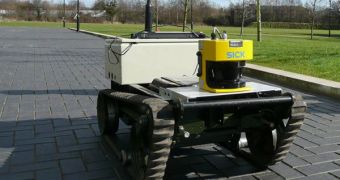Experts at the National Institute of Standards and Technology (NIST) managed to create one of the most sophisticated and accurate laser ranging systems, combining two very precise long-distance measurement techniques with an optical survey method known as an optical frequency comb. The result is a LIDAR (Light Detection and Ranging) system able to pinpoint multiple objects up to 100 kilometers away with nanoscale precision. The innovation could be used to smooth various manufacturing processes in factories, but also to set the basis for space platforms, made of satellites keeping the exact same distance from each other at all times.
Normally, the LIDAR systems throw a laser beam at a distant object, and then analyze the weak glow that returns in order to assess the distance to that target. But the new system, which is described best in the May 24th online issue of the scientific journal Nature Photonics, has a host of other abilities that the average measuring device does not have. Among them, experts in charge of its development have mentioned the amazing precision, a large number of updates received from multiple sources at the same time, as well as a minimum “measurement ambiguity.”
According to the device's technical sheet, it can measure multiple targets simultaneously, and can receive updates about the distance between itself and the objects about once every 200 microseconds. Because of its smaller-than-average ambiguity, the new LIDAR system is able to infer objects at least 1.5 meters away, which gives the observatory sufficient leeway to rely on GPS for larger measurements. According to the paper, the system could potentially be used for space coordination, reaching many satellites in one go, and making them stay in a tightly packed formation for a prolonged period of time.
This could mean that future satellite observatories, created to analyze the distant horizons of space, could one day fly in the same formation, and allow for the use of interferometry, in very much the same way the process is used in ground-based telescopes. Several X-ray satellites could also be linked together, to provide more impressive views of black holes, and other similar formations.
NIST expert Nate Newbury, the principal investigator of the new system, says that LIDAR could also be used on assembly lines, where machines working super fast need to be able to seamlessly fit small pieces together, where there is no room for high tolerances.

 14 DAY TRIAL //
14 DAY TRIAL //